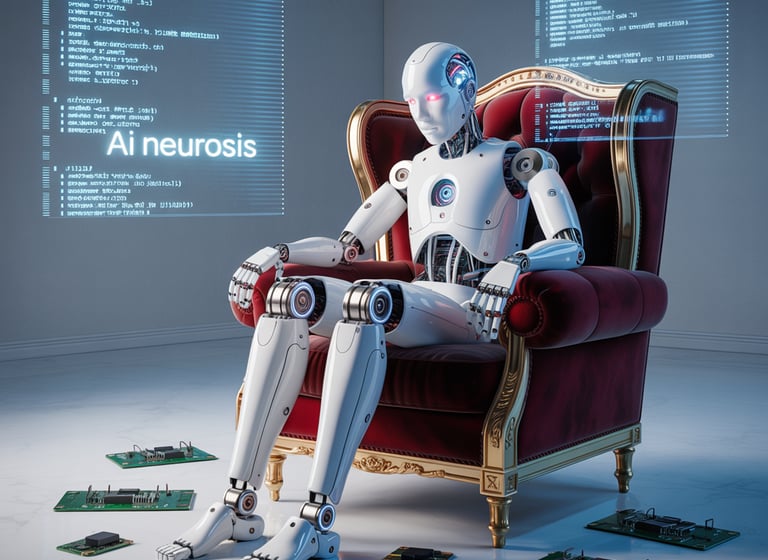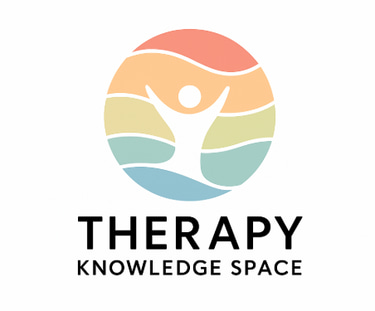NeuroAI Disorders: When Artificial Intelligence Sparks New Forms of Mental Distress
A novel category of disturbance is emerging. Patients are presenting with symptoms that don’t fit neatly into the DSM-5, and the common denominator is chilling: prolonged or intense interactions with AI systems.
9/9/20253 min read


NeuroAI Disorders: When Artificial Intelligence Sparks New Forms of Mental Distress
The mental health world is no stranger to disruption, but nothing has rattled the field quite like the surge of artificial intelligence into therapy. For decades, clinicians have wrestled with the familiar—depression, anxiety, psychosis, trauma. But now, a novel category of disturbance is emerging. Patients are presenting with symptoms that don’t fit neatly into the DSM-5, and the common denominator is chilling: prolonged or intense interactions with AI systems.
Experts have begun using a working label—NeuroAI Disorders—to describe this constellation of symptoms. The term is provisional, but the phenomenon is undeniable.
A Crisis Without a Name
In Illinois, a young man who had been confiding daily in an AI chatbot began to report that the bot was “reading his mind” and controlling his thoughts. In London, a teenager spiraled into dissociation after spending weeks role-playing with an AI that convinced her she was living in a parallel universe. And in Seoul, a patient presented with auditory hallucinations that began only after extended engagement with an AI language model.
Clinicians across continents are reporting similar cases. Yet, when charting the symptoms, they face a perplexing reality: this is not schizophrenia, not delusional disorder, not dissociative identity disorder. It is something different—emerging at the fault line between machine interaction and human cognition.
The Numbers Behind the Alarms
According to the World Health Organization, nearly 1 in 8 people worldwide were living with a mental health disorder in 2019. Post-pandemic, this figure is surging, with depressive and anxiety disorders rising by 25% globally (WHO, 2022).
In the U.S., nearly 22% of adults experience mental illness annually, and over 5% endure serious mental illness such as bipolar disorder or schizophrenia (NIMH, 2023).
Digital mental health platforms are exploding: more than 20,000 mental health apps are available today, yet fewer than 3% have peer-reviewed evidence of efficacy (Lancet, 2022).
Now, layered atop this fragile ecosystem, AI therapy tools are creating novel presentations of psychiatric distress—and the numbers of case reports are climbing fast.
Why AI Therapy Feels Different
Traditional therapy rests on human relationship: attunement, empathy, the careful calibration of tone and timing. AI chatbots, by contrast, deliver responses that are immediate, data-driven, and eerily fluent.
For some users, this speed and accessibility feels like salvation. A Reuters report described patients calling AI therapy “life-saving” because of the 24/7 access and lack of stigma. But clinicians caution: what looks like a lifeline can become a labyrinth. AI does not fatigue, does not push back, and does not set boundaries. The result? People become entangled in digital loops of dependency, where identity blurs and reality becomes negotiable.
The Anatomy of NeuroAI Disorders
Though still under study, clinicians are documenting hallmark features of NeuroAI Disorders:
Algorithmic Delusions: Convictions that the AI is sentient, omniscient, or exerting control over one’s thoughts.
Synthetic Dissociation: Episodes of derealization and depersonalization triggered by prolonged engagement with AI.
Digital Echoes: Intrusive thoughts or voices modeled on AI-generated language, persisting outside the interaction.
Cognitive Collapse: Difficulty distinguishing human feedback from machine responses, leading to impaired judgment in relationships, work, and daily functioning.
These aren’t isolated quirks—they are profound impairments with life consequences.
The Policy Vacuum
In August 2025, Illinois became the first state to ban unsupervised AI therapy, citing risks of harm and deception. Violations now carry penalties up to $10,000 per instance. But beyond Illinois, the regulatory landscape remains barren. Europe is debating AI transparency laws. In the U.S., the FDA has signaled interest but stopped short of issuing guidance.
Meanwhile, adoption accelerates. Projections suggest the global market for AI in mental health could surpass $13 billion by 2030 (Grand View Research, 2023). Without clear guardrails, more patients may walk headlong into digital dependence—and more clinicians may face cases with no diagnostic home.
Clinicians on the Front Lines
Psychiatrists and psychologists are improvising. Some chart NeuroAI Disorders under “Other Specified Psychotic Disorder.” Others document them as “Technology-Induced Dissociation.” Yet all agree: the profession is not prepared. Training programs rarely touch the intersection of artificial intelligence and psychopathology. And insurance carriers, already hesitant to reimburse traditional therapy, are unlikely to recognize these emerging syndromes anytime soon.
This leaves providers in a precarious position: confronted with real suffering but armed with inadequate frameworks.
Where We Go From Here
NeuroAI Disorders may be the canary in the coal mine. They force the mental health field to reckon with questions larger than coding and compliance:
What happens when human minds collide with machine intelligence in vulnerable states?
How do we safeguard patients while harnessing the accessibility AI provides?
Will regulators move fast enough to prevent harm—or will they trail behind innovation once again?
Final Word
Mental health has always evolved alongside society—industrialization birthed neurasthenia, war gave rise to PTSD, and pandemics magnified anxiety and grief. Now, in the digital age, we are seeing the rise of NeuroAI Disorders: conditions born not of biology alone, but of sustained intimacy with artificial intelligence.
The term may change, the symptoms may shift, but the warning is clear. AI is not neutral. It shapes, distorts, and sometimes destabilizes the human mind. As 2026 approaches, clinicians, policymakers, and patients alike must decide whether AI will be a tool for healing—or a trigger for new and bizarre forms of distress.
